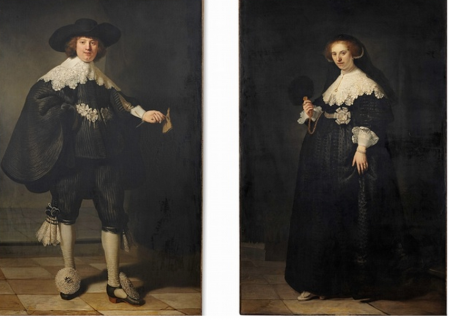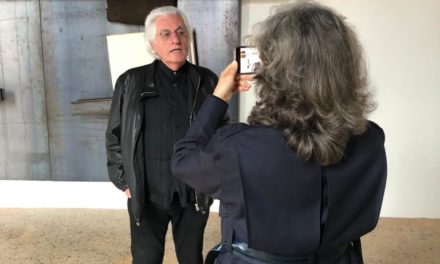Jointly owned by the Rothschild family, these paintings were to be sold starting in 2013. We now know that the deed has finally been done, following a hopelessly long-winded muddle involving both the French and Dutch states, for the colossal sum of 160 million euros (about $180 million). Surely, Eric de Rotschild will now be able to secure another benevolent gaze.
The record paid at auction for a Rembrandt painting was set at 32 million euros (about $36 million). The record price for an Old Master painting at auction, regardless of the artist, was set at 77 million euros (about $86 million), paid for The Massacre of the Innocents, an exceptional canvas by Rubens. But that was back in 2002, some time before the stampede of record prices paid for works by the great names in art history that we have been experiencing lately. Let’s not forget that last May, a not-so-exceptional Picasso picture was sold for 160 million euros (about $179 million).
Are these two Rembrandt canvases the best that Dutch art has to offer? That’s impossible to know, as the works have not been cleaned since the late 19th century at the earliest, when the Rothschild family acquired them. They are extremely rare and their provenance is most excellent indeed; they are spectacular, their format is impressive and, after all, they may well each be worth half a late Picasso.
In any case, after having the works appraised, the Rothschild family got in touch with the Louvre. Nowadays, the French state and its museums are cash-poor. The yearly acquisitions budget of the institution people call “the greatest museum in the world” comes to just 8 million euros (about $9 million). The largest acquisition ever made by this public museum (with outside help), back in 2009, was a painting by Ingres, for 19 million euros (about $21 million). So just imagine: 160 million euros!
Apparently, and as confirmed by our sources, the Louvre did not attempt to negotiate the paintings’ price with the family. But French museums nevertheless have a very serious weapon at their disposal, a weapon that makes the owners of exceptional works quake in their boots: they can classify these works as “national treasures,” a status that keeps them from leaving the country for a period of 30 months. This considerably decreases the works’ value: once the status is in place, demand for the work can only come from France. In this matter, it would seem that Sébastien Allard, the head of paintings at the Louvre, refused to let the painting leave the country. It would seem that his higher-ups decided otherwise.
By contrast, in the Netherlands, neither the Minister of Culture nor the director of the Rijkmuseum appeared to have been afraid of zeros, even though—contrary to the French—they had no legal recourse to obtain or retain the works. After the press revealed that the couple that Rembrandt begat might flee to distant shores, the French administration finally woke up. Just as Amsterdam was envisioning exhibiting the two paintings next to Rembrandt’s Nightwatch, the French Minister of Culture conducted in extremis negotiations—apparently, according to the daily Le Monde, with the French President’s intervention during a stay in New York—so that the price and possession of Mr. and Mrs. would be shared equally between France and Holland, in what could be five-year increments.
It should be noted that, from the start, the French Ministry of Culture once again lacked vision and initiative. Negotiating with the Rothschild family—who, according to several witnesses, demonstrated good will—along with legitimately classifying the works as “national treasure” and raising funds from major companies as well as individuals would have made it possible for the couple to join the national collection. (The Banque de France is now the one that’s charged with financing the 80 million-euro [about $90 million] purchase, as is apparently mandated for objects of major patrimonial interest.)
But who knows? Joint ownership in the two Rembrandts might foster European sentiment. The Louvre already owns 18 Rembrandts.
Donating=Supporting

Support independent news on art.
Your contribution : Make a monthly commitment to support JB Reports or a one off contribution as and when you feel like it. Choose the option that suits you best.
Need to cancel a recurring donation? Please go here.
The donation is considered to be a subscription for a fee set by the donor and for a duration also set by the donor.





